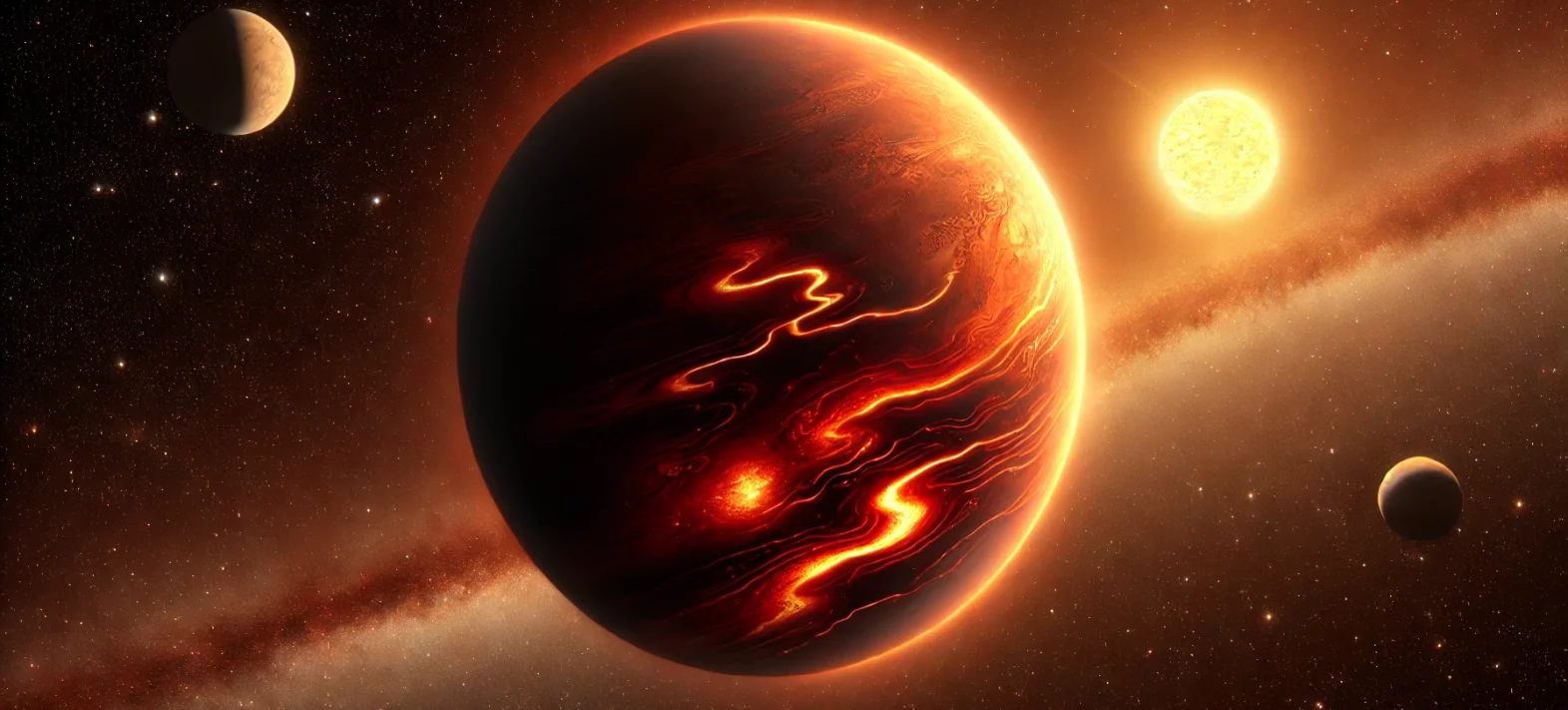A new machine learning model for predicting magma viscosity
A team of researchers led by Charles Le Losq (IPGP, IUF) has developed an innovative machine learning model capable of predicting the viscosity of magmas over a wide range of compositions, temperatures and pressures. This work represents a major advance in our understanding of magmatic processes, both on Earth and on exoplanets.

Molten magma on an exoplanet (generated by AI)
Publication date: 04/03/2025
Press, Research
Related teams :
Cosmochemistry, Astrophysics and Experimental Geophysics (CAGE)








